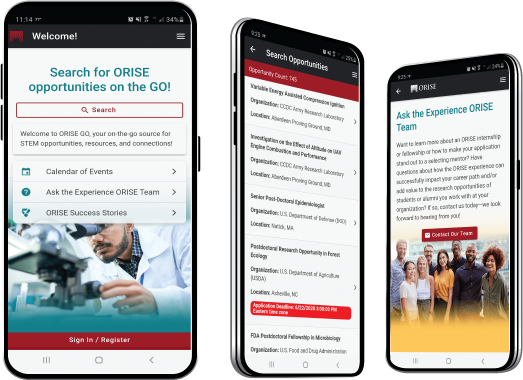Watershed Management Optimization
A complete application consists of:
- An application
- Transcripts – Click here for detailed information about acceptable transcripts
- A current resume/CV, including academic history, employment history, relevant experiences, and publication list
- Two educational or professional references
All documents must be in English or include an official English translation.
If you have questions, send an email to EPArpp@orau.org. Please include the reference code for this opportunity in your email.
The research participant will be part of a Research team that is developing tools to assist in Integrated Water Management on community and watershed scales. The overall project involves the development and application of EPA's Watershed Management Optimization Support Tool (https://www.epa.gov/exposure-assessment-models/wmost). WMOST is a decision-support tool designed to facilitate cost-effective integrated water management by communities and watershed organizations involving elements of storm water, drinking water, wastewater, and land conservation programs. Version 3 of the tool enables users to plan how to meet selected targets related to water quantity-related goals such as maintaining base flows, minimizing peak flows and flooding risks, and maintaining storage within watersheds as well as water quality goals such as water quality critieria, loading targets for total maximum daily loads, or minimization of combined sewer overflow events through the use of combinations of management options, which combine both gray and green infrastructure. Version 4 of the tool (in progress) will enable users to evaluate ancillary co-benefits as well as minimizing overall cost. Use of the WMOST tool requires exploration of goals and possible management scenarios, identification of input data, running WMOST, and working with stakeholders to use WMOST outputs in their decision making.
In addition to tool development, EPA is working on improving user access to available data required as inputs to WMOST, including hydrologic (and ultimately water quality) time series from existing hydrologic models such as HSPF, SWAT, GWLF, and SWMM. EPA is developing alternative approaches to enable internet access to these time series as well as other ancillary data required by WMOST.
The research participant will have the opportunity to run existing models using both historic and future climate scenarios to produce the time series with appropriate spatial and temporal resolution required for WMOST, to learn how to apply a preprocessor to format HSPF and SWAT model outputs to match WMOST input requirements, and to format data for posting in EPA's Estuary Data Mapper application (www.epa.gov/edm) and elsewhere. EMD allows users to identify, visualize, and download environmental data for coastal watersheds and estuaries. The research participant will also have the opportunity to assist with case studies involving the application of WMOST to communities in different climatic regions across the country and testing of functionality as new modules are developed in WMOST. The case studies are conducted as collaborative exercises involving communities and watershed organizations and will involve stakeholder engagement.
Future opportunities (pending funding) will include participation in development of interfaces for a tiered optimization approach, with Tier 1 optimization conducted at larger river basin scales to meet annual loading targets at multiple locations, to be followed with more focused optimization solutions at the HUC12 to HUC10 scale using WMOST.
This program, administered by ORAU through its contract with the U.S. Department of Energy (DOE) to manage the Oak Ridge Institute for Science and Education (ORISE), was established through an interagency agreement between DOE and EPA. The initial appointment is for one year, but may be renewed upon recommendation of EPA and is contingent on the availability of funds. The participant will receive a monthly stipend commensurate with educational level and experience. Proof of health insurance is required for participation in this program. The appointment is full-time. Participants do not become employees of EPA, DOE or the program administrator, and there are no employment-related benefits.
The mentor for this project is Dr. Naomi Detenbeck (detenbeck.naomi@epa.gov).
Candidates should have received a Master's Degree before applying for this position. The degree must be received within five years of the appointment start date. A background in Water Resources, Environmental Science, Geography, Environmental Engineering, Hydrology, Geology, or a related field is desired.
- Experience with one or more of the following models would be useful: SWMM, SWAT/HAWQS, HSPF and/or other semi-lumped parameter water quality models.
- Training and experience in ArcGIS and R (including geospatial functions) is desired.
- Familiarity with water resources, watershed management practices including green infrastructure storm water control measures and agricultural BMPs, and optimization principles (linear, nonlinear, mixed linear or nonlinear/integer, genetic algorithms), algebraic modeling languages (esp. AMPL) is preferred.
- For future phases of work, familiarity with the USGS SPARROW model, NHDPlus v2 hydrologic framework, VBA, linking R and/or Python with Excel (e.g., RExcel or Python library openpyxl), RShiny would be useful.

 ORISE GO
ORISE GO

The ORISE GO mobile app helps you stay engaged, connected and informed during your ORISE experience – from application, to offer, through your appointment and even as an ORISE alum!





